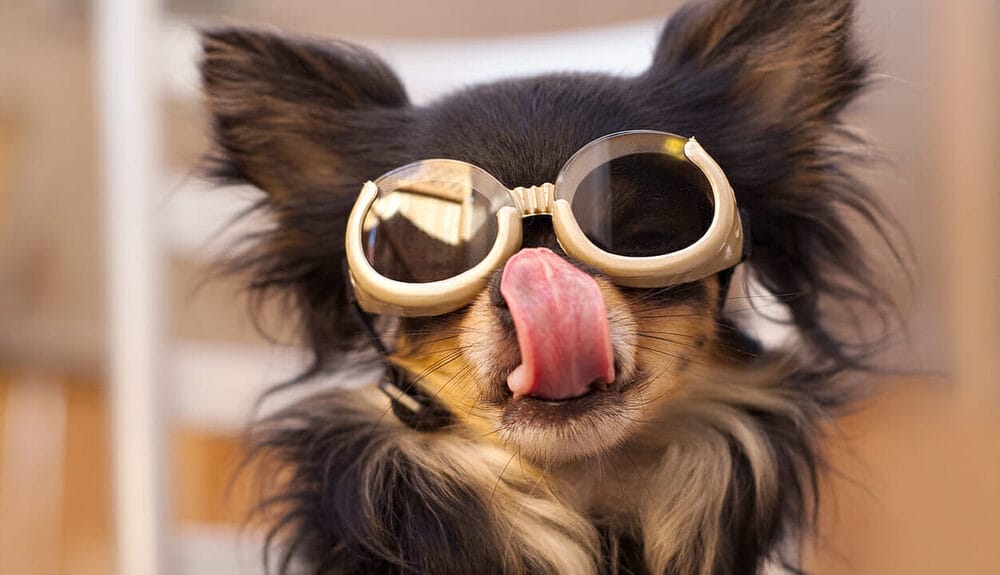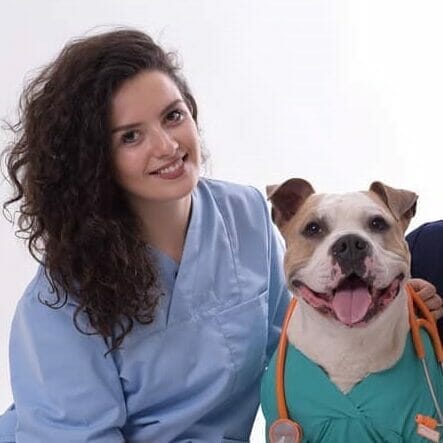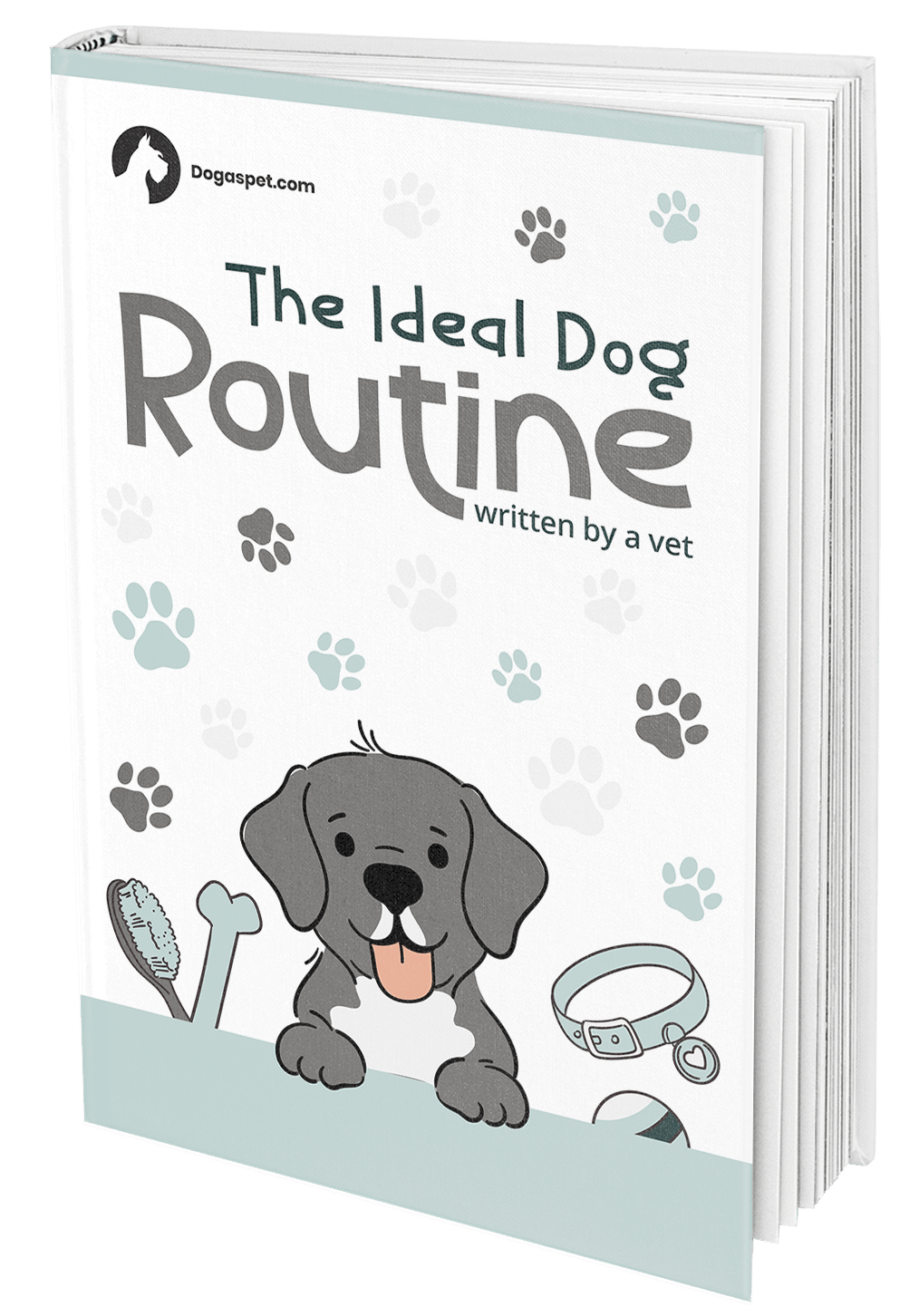
Have you noticed your dog stumbling upon the furniture lately? If yes, they may be developing cataracts. Even though we know by now that cataracts are not fatal, they can still make your dog’s life more difficult. But, besides impaired vision, can dogs live a good life with cataracts? We at Dogaspet have the answer.
What Are Cataracts?
A cataract is an abnormal permanent change in the protein fibers that make up the eye’s lens. The clear protein becomes milky and white when cataracts develop, significantly affecting the dog’s vision.
When the condition is still immature, the dog may lose its balance or only show some not-so-major behavior changes. Still, as the condition matures, it’ll start bumping into things.
Unfortunately, if left untreated, cataracts may cause impaired eye vision or even blindness. And we know how scary and sad it is for every dog owner to see their dog struggling, especially when there’s nothing they can help with.

Fortunately, cataracts are not life-threatening, and dogs that develop cataracts, be it in their early or more mature age, can lead a happy and healthy life despite the disease.
Although it may seem scary initially, cataracts are a very common health problem in dogs, and almost every dog develops cataracts as they age. But, if there are no other severe and life-threatening conditions, your dog will have no problem living as it used to live before cataracts.
The condition is the same in all species of mammals because we all have same anatomical structure of the eye.
Depending on the severity of the cataract, there are four categorizations of them:
4 Categories of cataracts in dogs
- Incipient cataracts
- Immature cataracts
- Mature cataracts
- Hyper-mature cataracts
Why do dogs develop cataracts?
Diabetes mellitus
Another common cause for your furry little friend’s development of cataracts is diabetes mellitus becuase of the disruption of the lens metabolism. To explain to you how diabetes mellitus is connected with cataracts; we must go deeper into science.
Diabetic dogs have issues with high blood sugar. Excess sugar is transformed into sorbitol in the eyes, leading to structural changes and consecutive eye fluid production.
This leads to a few changes:
- Swelling
- Lens fiber disruption
- Oxidative stress
According to a study, 132 out of 200 dogs developed cataracts as a secondary disease from diabetes.
Hereditary disease
Some dog breeds are more prone to cataracts and it includes:
- American Cocker Spaniel
- Labrador Retriever
- French Poodle
It’s also interesting that this disease is found as Juvenile Hereditary Cataract (JHC) in the following breeds:
- Boston Terriers
- Staffordshire Bull Terriers
- French Bulldogs
Signs that your dog has cataracts
Pet parents can notice cataracts even without prior knowledge of the disease. But let’s point out the most common signs every pet owner should be aware of if the dog starts developing cataracts.
Cloudy eyes
Does your dog’s lens appear gray or white? If yes, this is a reminder to visit your vet. This is the most common sign that your dog started developing cataracts.
Eye scratching
Eye scratching is a common sign of many eye-related diseases. Be aware that even healthy dogs can scratch their eyes. Sometimes this is their way of telling you, “Notice me human”.
If scratching is becoming more frequent, book your vet appointment.
Redness and irritation
Frequent scratching usually leads to redness and irritation. If the cause of redness and irritation is not a cataract, your vet might prescribe mild medications or eye drops.
Therefore, when you notice these signs, visit your vet because prevention is the best and cheapest cure.
How Do Cataracts Impact Your Dog’s Life?
As much as we hate to admit it, cataracts impact the dog’s life. Both dogs and owners should learn how to live with long-term health conditions and adapt to changes accordingly. Some dogs struggle more than others, and their everyday life can change for the worst if left untreated.
Therefore, do your best to catch the condition in its early stage! With proper care and vet management, the dog will suffer less.
Our team at Dogaspet thinks that the worst for our puppies is losing the ability to enjoy their favorite daily activities. Studies prove that the only similar bond to that in mother-infants is only between human-dogs. So, imagine what our pets would feel like when they lose their ability to play with their humans. Also, not seeing their favorite humans must be tough, no?
Should You Consider Surgery?
Definitely, yes, but we advise considering some factors first!
Cataract surgeries in dogs have a very high success rate in a short time. But we are all scared of that small chance that something might go wrong.
For example, dogs with severe inflammation are not the best candidates for surgery. That’s why pre-operative examinations are a must! We know that it can be pricey, but it is crucial for a successful outcome.
Also, if the dog suffers from a chronic condition or is very old, you should put off surgery. Chronic disease or old age may only cause additional complications.
However, if your dog is in healthy condition and has no prior health problems, and every test only indicates a healthy dog without any other damage to the retina or the other organs, the veterinarian and the ophthalmologist will wave the green flag and allow the surgery.
After many administered tests, the ophthalmologist will schedule the cataracts surgery and will help your dog to lead a healthy and happy life.

Before surgery, the vet might prescribe dog eye drops so the eye remains in good condition until the surgery. The hard part comes after the surgery is done. The recovery process usually takes several weeks or even months, and you, as an owner, will be responsible for taking extra care of your furry little friends.
During those few weeks, your dog might feel more lethargic or shows signs of a lack of appetite, but this is not a cause for concern. All of this is entirely normal, and after the surgery schok passes, your dog will return to normal.
What Are Other Options That Help With Cataracts?
Although surgery is our #1 recommendation when it comes to cataracts in dogs, there are a few other options.
If your dog is very old or suffers from a life-threatening disease, you should refrain from even considering surgery.
Dog goggles are becoming more and more popular. They protect your dog’s eye from irritants like sand and dust. However, in the case of cataracts, you must get goggles with UV protection because UV lights may do more harm than good.
These goggles are helpful for other eye-related issues like glaucoma and conjunctivitis. The outcome is a clear vision.

There are some other options that help with cataracts, but these options are not very promising. Supplements are temporary solutions, but none of the below-mentioned supplements can promise complete healing. Let’s take a look at them:
- Vitamin C
- Vitamin A
- Vitamin E
- Coenzyme Q10
- Eye drops
But bear in mind that these are just supplements, so don’t expect magic! You can just improve your dog’s overall health with the necessary supplements.
Eye drops are only helpful in dissolving the protein clumps that cause cataracts. But, again, lower your expectations. These supplements have slow and variable effectiveness.
This is the most affordable alternative treatment, but there isn’t scientific proof for a full recovery. However, it won’t hurt to try it out. Besides cataracts, your dog needs the above-mentioned vitamins to help combat other underlying conditions.
FAQ – Frequently Asked Questions
We are coming to the end of this post, but before that – let’s answer some of the most frequently asked questions related to dogs with cataracts.
Are cataracts in dogs related to age?
Yes and no!
Age-related cataracts are very common in both humans and dogs. But besides age, there are specific dog breeds more prone to cataracts. So ultimately, age is not the only cause of cataracts.
Can dogs with cataracts lead a normal life?
Yes, dogs with cataracts can lead a normal life. But we have some bad news! This condition is hard for both the pet and the owner.
Therefore, you need to pay extra attention to your four-legged furry friend. Although this information relieves, remember that dogs with cataracts can develop secondary health issues that can be painful or even life-threatening.
Do all diabetic dogs develop cataracts?
Although not limited to, most diabetic dogs will develop them. According to cohort studies, the majority of dogs will develop cataracts within 5-6 months of the initial diagnosis.
Conclusion: Are Cataracts an Obstacle to a Normal Life?
There is no correct or wrong answer to this question. It all depends on the general health condition of your dog. We have 3 final simple recommendations: regular vet-check ups, proper treatment, and good post-operative care. The outcome is what we all want: a happy and healthy pet.

